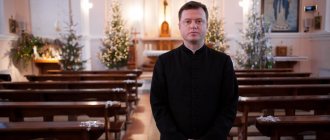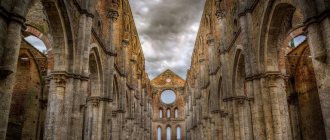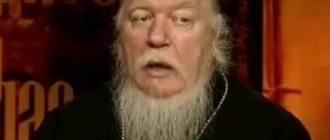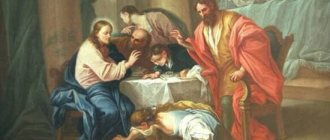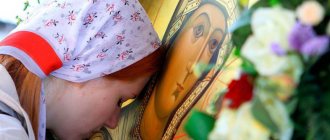Establishment of the Patriarchate in Byzantium
The official date of the Schism (Great Schism) is considered to be 1054. But the events preceding the separation of the Churches began to develop much earlier. The origins of the conflict can be called the separation from the Roman Empire in 395 of Byzantium, with its capital in Constantinople. Naturally, the Patriarchate was established in the new capital. In 472-489, the title of “Ecumenical” was finally assigned to the Patriarch of Constantinople, Acacius. Already at that time, significant ritual differences appeared in the performance of the Sacraments and services between the Latin West and the Greek East. Thus began the split of the Church.
Meeting of Patriarch Kirill of Moscow and Pope Francis (2016)
East: Is the Second Rome superior to the First?
The emperor in the Roman Empire had absolute power, including over Christianity: it was Constantine who convened the First Ecumenical (Nicene) Council, which established the fundamental dogmas of Christianity, such as the concept of the Holy Trinity. In other words, the highest clergy was subordinate in everything to the man on the throne.
While the emperor remained alone at the pinnacle of power, everything was relatively simple - the principle of unity of command was preserved. After two equal centers of power were formed, the situation became sharply more complicated. Especially after Rome collapsed under the onslaught of barbarians (476), and political chaos reigned in Western Europe for a long time.
The rulers of the Eastern Roman Empire, which we know as Byzantium, positioned themselves as the heirs of the empire, including in terms of power over the church. Constantinople unofficially acquired the status of the “second Rome” - the capital of world Christianity.
Schism of the Church
For the first time, the division into “Orthodoxy” and “Catholicism” emerged in the 9th century. The formal reason for this was the dissatisfaction of Pope Nicholas I with the election of Patriarch Photius. He argued that Photius was elected illegally. In fact, Nicholas I wanted to become the head of the diocese of the Balkan Peninsula. This naturally outraged the Patriarchate of Constantinople. Also, the Pope (Pope is the title of the Roman bishop) wanted to realize the concept of Roman domination in the Universal Church.
The first wave of separation lasted until 867. The 10th century was a century of truce and the establishment of trusting relations between the Western and Eastern Churches. But in the 11th century, under the reign of Pope Leo IX and Patriarch Michael Cerularius, the final split of the Church into Catholic and Orthodox occurred. The reason for this was the closure of the Latin churches in Constantinople. The Pope sent a message to the Patriarch, in which he outlined his desire to become the head of the entire Church. The result of the conflict was mutual anathemas at the level of church hierarchs. These anathemas were personal and did not apply to the Churches. But they cemented the split between the two Christian denominations for many centuries right up to the present day.
Failed embassy
Pope Leo IX
What exactly happened in 1054? Pope Leo IX sent an embassy to Constantinople. His goal was to mend relations that had become increasingly tense in recent years: the influential Patriarch of Constantinople, Michael Cerularius, sharply resisted attempts by the Latins to impose their theocracy in the east. In 1053, the warlike Michael even ordered the closure of all churches in the city that served according to the Latin model: the Latins were expelled, and some particularly indignant Greek priests kicked the bread prepared for the Eucharist.
Patriarch of Constantinople Michael Cerularius
It was necessary to resolve the crisis, but it only turned out to worsen: the embassy was headed by Cardinal Humbert Silva-Candide, as irreconcilable as Michael. In Constantinople, he communicated mainly with Emperor Constantine Monomakh, who politely received him, and even tried to persuade him to remove the patriarch, but to no avail. Humbert and the two other legates sent with him did not even speak to the patriarch himself. It all ended with the cardinal, right at the service, presenting Michael with a papal letter about the deposition and excommunication of the patriarch from the church, after which the legates left.
Michael did not remain in debt and quickly convened a council, which anathematized the three legates (one of whom later became Pope) and cursed them. This is how the church schism took shape, which later came to be called the Great Schism.
Reasons for the schism of the Christian Church
Why did a schism occur in the Christian Church in 1054? The schism was based mainly on doctrinal factors. They concerned ideas about the mystery of the Holy Trinity and the structure of the Church. To these were also added differences in less important issues related to church customs and rituals. The desire of the Pope to become the generally recognized head of all Christian Churches also played a big role.
Theological differences about the Filioque (the dogma of the Trinity) occupied a special place. The Orthodox Church, relying on the Gospel quote: “The Spirit of truth... proceeds from the Father” (John 15:26), argued that the Holy Spirit comes only from God the Father. The Catholic Church defended its point of view about the procession of the Spirit from the Father and the Son.
In addition, the Catholic Church used unleavened bread in the Sacrament of Communion. This contradicted the Gospel events: at the Last Supper, Jesus Christ broke leavened bread.
The Council of Constantinople in 1583 decreed: “He who says that our Lord Jesus Christ at the Last Supper had unleavened bread (without yeast) like the Jews; but did not have leavened bread, that is, bread with yeast; let him be far away from us and let him be anathema...”
West: Heirs of the Apostle Peter
Apostle Peter
Meanwhile, in real Rome, which was going through hard times, the Christian clergy was not going to lose primacy in the world of believers. The Roman Church felt special: in addition to the partially lost capital position, it claimed special rights that went directly back to Christ.
“You are Peter, and on this rock I will build my church,” Jesus says in the Gospel of Matthew to his disciple Peter (whose name means “rock”, even in the Holy Scriptures there is a place for a play on words). The Roman bishops interpreted this quote quite unambiguously: the Bishop of Rome, the Pope, is the successor of Peter, who preached and was martyred by the pagans in Rome, which means that it is Rome that should rule the entire Christian Church.
In Constantinople, they preferred to gently ignore such an interpretation. This inconsistency regarding the issue of supreme power became a time bomb for Christianity. Long before 1054, the number of dogmatic disputes between the Greek-Byzantines and the Latin-Romans grew: for about 200 years in the 4th-8th centuries, the churches alternately interrupted and then resumed communication.
Perhaps the greatest blow to the unity of the church was the crowning of Charlemagne as Holy Roman Emperor in 800. This directly offended Constantinople and finally destroyed the formal unity of the empire. However, Pope Leo III, who crowned Charles, can be understood: Charles may be a Frank by birth, but he is a great commander and can guarantee the protection of the papal throne here and now, while the Greeks are solving their own problems somewhere far away.
The final division of the Church into Catholic and Orthodox
Over the course of several more centuries, there were attempts at both rapprochement and events that strengthened the schism of the Church. As a result, the Pope's demand to recognize his dogmas led to tough measures from the Patriarchate of Constantinople. The entire Catholic Church was declared heretical.
During the Middle Ages, the Latin West continued to develop in a direction that further alienated it from the Orthodox world. On the other hand, serious events occurred that further complicated understanding between Orthodox peoples and the Latin West. The most tragic of them was the IV Crusade, which ended with the destruction of Constantinople. Many Orthodox monks were expelled from their monasteries and replaced by Latin monks.
Perhaps this happened unintentionally. But this turn of events was a logical consequence of the creation of the Western Empire and the evolution of the Latin Church from the beginning of the Middle Ages. Until the 50s of the twentieth century, Orthodox and Catholics considered each other schismatics. Accordingly, there was no communication between the Churches.
Further differences between Catholicism and Orthodoxy
- Center status.
Catholics have only one head of the church (the Pope).
The Orthodox have several patriarchs. In addition, over time, local Orthodox churches arose: Russian, Georgian, Ukrainian. The limits of papal power are determined by the Dictatus Pape, a document consisting of 27
paragraphs preserved in the register of letters of Gregory
VI
I (†1085). At the time of the schism, in addition to the Roman and Constantinople Patriarchates, there were also the Patriarchates of Jerusalem, Antioch and Alexandria. Moreover, each of them was absolutely independent. This dogma refuted all the teachings of the apostles, who advocated the equality of church communities; Rome could only be “first among equals.” But he wanted to become the only establisher of canons and judge in all church patriarchates. The dispute about the primacy of the Patriarchate of Constantinople did not arise at that time, so there were no contradictions on this issue. Constantinople opposed the usurpation of power by Rome. - The role of the church in political affairs.
Throughout the Middle Ages, there was a conflict between kings and popes for the right to supremacy in the Western world. In Orthodox countries, everything was monotonous: the monarch was considered superior to the patriarch. His painful attitude towards the power of Rome manifested itself in his disputes with kings and emperors. In Constantinople, such attempts to seize power by the patriarch were stopped at the early stages. In Russian history, Nikon is a striking example. In the absence of the Tsar, he issued decrees and endorsed the resolutions of the boyars. In principle, he performed completely royal duties. The Patriarch had the power to judge in church matters. It was precisely fearing such dual power that Peter established the Synod and abolished the patriarchate. - Calendar.
After the adoption of the new Gregorian calendar in
the 16th
century, all Catholic countries switched to a new chronology.
The Orthodox Church still uses the Julian calendar to this day. There are 5
Orthodox churches that live according to the Julian calendar, the rest live according to the New Julian calendar, which until 2800 will coincide with the Gregorian calendar. Therefore, it is difficult to draw a distinction between Orthodoxy and Catholicism. - Parishioner Rules
. During services in Orthodox churches, parishioners must stand for Mass, while Catholics are allowed to sit in the pews. Orthodox churches also have benches. And there is an expression that it is better to think about God while sitting than while standing on your feet. - Sacraments of the Church.
An Orthodox person stands before a priest during confession.
Catholics sit behind a screen, so the priest does not see who exactly came to him. The main difference is that in Orthodoxy confession takes place before Christ and in the prayer of permission, which the priest reads, this is said. In Catholicism, remission of sins is carried out by a priest, which is also indicated by the words of his prayer. For information: Baptism in Orthodoxy goes with the words: the servant of God is baptized in the name of..., and in Catholicism I baptize the servant of God... Wedding: marriage is concluded before God (he is the performer of the sacrament) and the words that God has united, let no man separate. In Catholicism: those getting married are themselves the performers of the sacrament. If we take the sacrament itself, then there are differences ranging from the anophora (part of the Eucharistic canon) to the sacrament itself. In Orthodoxy, everyone partakes of both the blood and the body of Christ; in Catholicism, only priests partake of both types, parishioners only of the blood of Christ. Children under 12
years of age are not allowed to receive communion for safety reasons (their actions may result in the blood of Christ falling onto the ground).
The sacrament of confirmation in Orthodoxy is carried out immediately after baptism (if this did not happen for one reason or another, then there is an expression: to finish baptism, that is, to carry out confirmation, which is an independent sacrament). In Catholicism, this is called confirmation and is carried out only after 12
years of age. Unction: in Orthodoxy this is an ordinary sacrament that is carried out by fasting for many days, in Catholicism only under the threat of death. (but this can be attributed more to ritual differences). - Effect on language.
For the Pope, the use of Latin by Catholic countries was mandatory, but the Patriarch of Constantinople allowed the use of his letter.
Both Constantinople and Rome considered it possible to write the Holy Scriptures in three languages: Hebrew, Greek and Latin. This tradition was broken in Rome when they allowed Cyril and Methodius to translate the scriptures into Slavic. For a long time, services in local languages were not welcomed in Rome (the primary reason was the fear of distortions during translation). Only after 1970
did Roman Catholic parishes gain the right to carry out services in their native language.
So here, too, we can only talk about tradition, and even then in the past tense. The main differences still lie in the spiritual sphere, the filioque is one of the obstacles, but over 1000
years new dogmas have appeared that contradict both Scripture and Tradition.
After the split, the differences between some of the peoples of Europe increased. A striking example is the Slavic peoples: those who came under the supremacy of Rome took Latin and the Latin alphabet as a basis. Many Orthodox countries began to develop their writing based on the Cyrillic alphabet.
Long story
The mutual excommunication in 1054 had a rather symbolic meaning. Firstly, the papal legates excommunicated only Michael and his entourage (and not all the Eastern churches), and he himself excommunicated only Humbert's associates (and not the entire Latin Church and not even the Pope).
Secondly, with a mutual desire for reconciliation, the consequences of that event could be easily overcome. However, for the reasons described above, no one needed this anymore. Thus, quite routinely, not the first, but the most significant split in the Christian Church in history occurred.
Church schism
